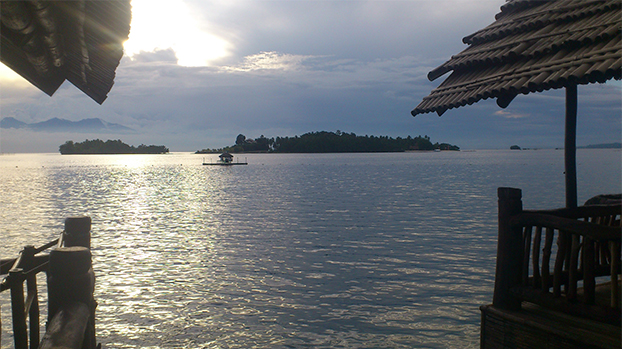Destinations
Pearl Farm Beach Resort: Spelling luxury in Mindanao
Paying a visit to – arguably – the most high-end venue in southern Philippines, Pearl Farm Beach Resort, where bliss can be had for the taking.

 You may not be the most fervent believer of traditional healing practices – for instance, Traditional Chinese Medicine (TCM) holds that special points in the body (usually at the extremities) correspond to other (usually more vital) parts of the body, so that (as an example) applying pressure at the space between the thumb and the pointer finger could relieve pail (headache, stomachache, and so on).
You may not be the most fervent believer of traditional healing practices – for instance, Traditional Chinese Medicine (TCM) holds that special points in the body (usually at the extremities) correspond to other (usually more vital) parts of the body, so that (as an example) applying pressure at the space between the thumb and the pointer finger could relieve pail (headache, stomachache, and so on).
But after an activity-filled day (island-hopping, snorkeling, road-tripping and the likes) at the Island Garden City of Samal, no matter your way of believing (or seeing), every pressure given by the deft hands of the masseuse/s on the body delivers… relief. While lying on a cushioned white mat, facing Davao’s sea slowly get swallowed by darkness, such is the pleasure derived at the Pearl Farm Ylang Ylang Spa – Pearl Farm Beach Resort’s health and wellness center.
Not that any less ought to be expected, considering that the place’s offerings are (in a word) pricey. Heck, just about everything in this place is pricey.
But in this way, Davao’s Pearl Farm Beach Resort spells luxury in these parts of southern Philippines…
STAYING THE NIGHT
If your concept of “tropical paradise” is Station 1 of Boracay, NOT Stations 2 and 3, then Pearl Farm Beach Resort should satisfy.
Note that – even if it is being sold as in Davao – the resort is actually not in Davao City proper. Instead, it is located in a small island cum province across the strait, poetically called the Island Garden City of Samal. Going to the resort, therefore, takes from 30 minutes (of ferry ride) from the Sasa Wharf on Davao City’s ferry terminal at the Davao Waterfront Insular Hotel.
By the way, don’t expect to see gardens – there aren’t any; but the name is supposed to encapsulate the beauty that can be found in the island.
The Pearl Farm Beach Resort actually housed a farm for the south sea pearls (thus the name). In the 1990s, however, the owners converted it into the luxury resort that it is now.
It is popular to day guests who head to it to swim at its (somewhat small) swimming pools, or take a stroll around the vegetation in the 11-hectare complex, or take a dip at the white sand beach. This day trip is affordable – only costing approximately P2,500 per person (including a meal a boot).
It is when staying over for the night that the resort’s luxe image is highlighted.
There are actually various room types available, ranging from hilltop rooms to those in houses on stilts. If sleeping lulled by the sounds of singing crickets is what’s desired, the former is a must-consider. But for those who want to be pacified by the sound of the waves gently crushing against the rocks, then the latter is recommended.
 As for the room rates? The Balay (a.k.a. hilltop) rooms cost from P8,550 per person (single occupancy); the same price charged for the beach-side (yet located far from the main receiving area) Samal House and Mandaya House. Prices fall (a little) from P6,700 per person for those considering sharing. The prices of the rooms in the houses on stilts start from approximately P9,700 per person per night (minimum of two persons).
As for the room rates? The Balay (a.k.a. hilltop) rooms cost from P8,550 per person (single occupancy); the same price charged for the beach-side (yet located far from the main receiving area) Samal House and Mandaya House. Prices fall (a little) from P6,700 per person for those considering sharing. The prices of the rooms in the houses on stilts start from approximately P9,700 per person per night (minimum of two persons).
These prices come with welcome drinks; one breakfast, one lunch and one dinner; complimentary use of swimming pool, beach area, mini gym, basketball court, badminton court, tennis court and game room; and roundtrip boat transfers.
AMENITIES GALORE
As befits its luxury tag, Pearl Farm Beach Resort has various offerings that will suit various demands. There’s an Aqua Sports Center, where guests can rent out speed boats and outrigger boats for cruising; jet-skis; banana boat rides; kayaks, hobie cats; and snorkeling gear. It also has certified instructors for wind-surfing, water-skiing and scuba diving (the place has two sunken World War II Japanese vessels awaiting discovery). There are the aforementioned (not too big) outdoor swimming pools. There is a tennis/basketball/badminton court. There is a game room. There is a conference room for up to 70 pax. There is a souvenir shop (called Butik). And there is even the Mandaya Weaving Center, where Mandaya tribeswomen skillfully weave their traditional fabrics (called dagmay) and other ornamentation.
But if you’re just looking at spending the days lazy, sipping drinks while enjoying the breeze and getting lost while looking at the distance may be had at Parola Bar (that offers views of the distant Mt. Apo), Maranao Restaurant (offering Filipino and international cuisines, with seafood specialties), or Malipano Gazebo (in a nearby, yet separate island).
JUST TAKING IT SLOW
And it is actually taking it slowly that is what’s best done in Pearl Farm Beach Resort.
So that the stress-busting treatments at Pearl Farm’s Ylang Ylang Spa are worth considering.
The men’s “stress buster”, priced at P1,000, is a combo of Chinese, Swedish and deep tissue techniques. Hilot, priced at P1,250, gives the traditional Filipino massage a twist with the use of heated banana leaves and your choice of VCO, tanglad oil, or Ylang-ylang essential oil. The “Pearl Farm Royal Massage”, priced at P2,500, is a two-our session that makes use of special oil blends as mood therapy. And then there’s the warm stone massage, priced at P1,500, that makes use of (this should be quite obvious) hot stones as tools for the massaging.
For the not-that-adventurous, you can go “common”, by availing of the Swedish oil massage (P1,000), Shiatsu (P1,000), or the Ventosa (P1,625).
Other treatments include: body scrubs (from P1,250), foot treatment (from P875), facials (from P1,000), and hair treatments (from P1,000).
It was, in fact, while getting my feet massaged by the pool that I got to appreciate this place’s (let’s say enduring) appeal. Getting pampered, while taking in the sights and sounds – of the vast blue sea that seem to connect with the infinity pool; and of the insect sounds from the thick foliage enveloping the resort – is how I imagine being blissful to be. And this, truly, may be one of the best ways to achieve that while in these parts of the Philippines.
Pearl Farm Beach Resort is located at Kaputian, Island Garden City of Samal, Philippines. For more information, contact: (+6382) 2351234, (+6382) 2351235, or (+6382) 2351236.
Its Davao sales office is located at 3/F Abreeza Ayala Mall, J.P. Laurel Avenue, Davao City. For more information, call (+6382) 2850601 or (+6382) 2850876; or email kadizon@anflocor.com.
Its Manila office is located at Ground Floor ANFLOCOR Building, 411 Quirino Avenue corner NAIA Road, Tambo Parañaque City 1700. For more information, call (+632) 8552741 local 207 and 208, or (+632) 8547892; or email: fslebris@anflocor.com, gbdichosa@anflocor.com, or eftuanio@anflocor.com.
Destinations
Antipolo’s Crescent Moon, where art meets food
Antipolo has long been promoted as a creative hub in the Province of Rizal, hosting the likes of the Pintô Art Museum, and art collectives like the ARTipolo Group, Inc. This may also explain why major Antipolo destinations are sold as art spaces that offer add-ons.

So… Antipolo has long been promoted as a creative hub in the Province of Rizal, hosting the likes of the Pintô Art Museum, and art collectives like the ARTipolo Group, Inc. This may also explain why major Antipolo destinations are sold as art spaces that offer add-ons… such as restaurants or cafés or whatever.
@outragemag #CrescentMoon as #restaurant that wants to be an #artspace in #LGBT #Antipolo, #RizalProvince ♬ original sound – Outrage Magazine
And here, the Crescent Moon Cafe and Studio Pottery easily comes to mind as a Southeast Asian restaurant that’s also a pottery store and art space with creative workshops.
How was the place for us?
Una, the place isn’t easily accessible to those without private vehicles. So… from this alone, you already know the target market of this place.
Ikalawa, the actual venue is… artsy. There are various buildings here – e.g. one houses paintings that are also for sale, and another houses pottery outputs also for sale. So if you arrived early, or if the orders take too long, you can tour the area to check the art pieces on display.
Ikatlo, the staff’s okay naman, able to offer help as needed – e.g. sundo while touring another building when our food was about to be served already
Ika-apat, how was the food?
- We started with the Gado Gado (₱470, mixed spring vegetables with tempeh and peanut sauce) that may have been refreshing, but… the serving was quite small.
- The Beef Rendang (₱640) was actually good, properly blending the flavors of lemongrass, ginger, galangal, turmeric and chili for a savory, spicy and sweetish offering. Too bad the serving’s quite small considering the asking price.
- The Lemongrass Pork Belly (₱500) was delish, malasa (tasty) without the overpowering taste of any particular ingredient (not even the lemongrass).
As FYI: this is not a cheap place, seemingly emphasizing the “art is for rich people” mantra. A serving of rice, for instance, costs ₱55, which should actually already pay for one kilo of rice if bought in some marketplace. The coffee, too, was disappointing, served quite cold (not even lukewarm), making you feel you just wasted ₱135.
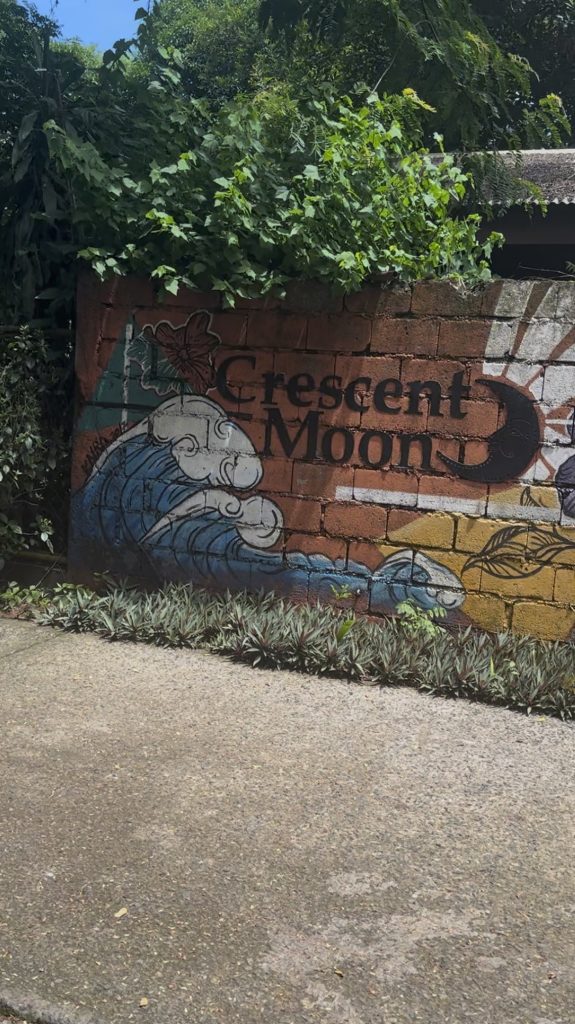




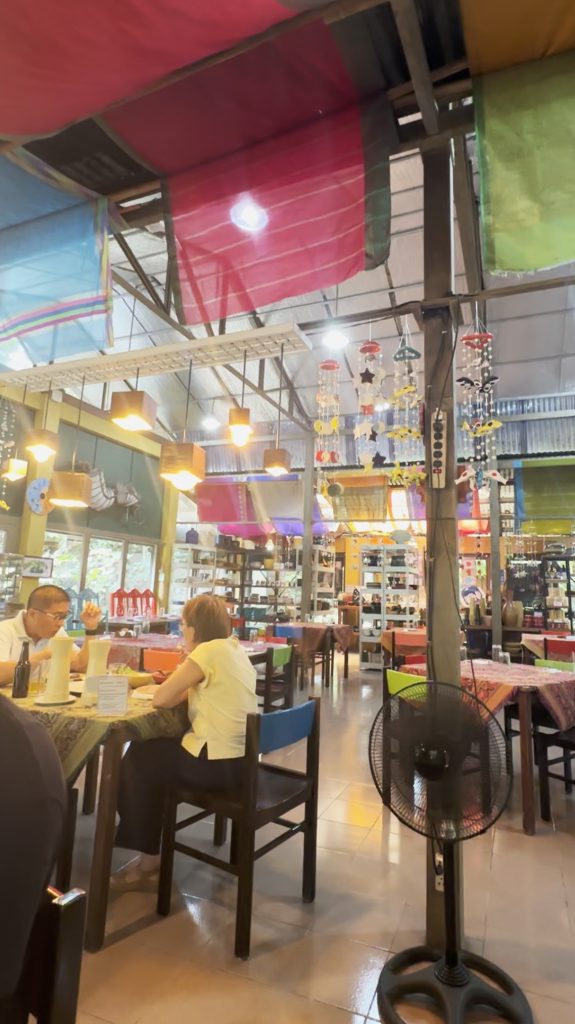


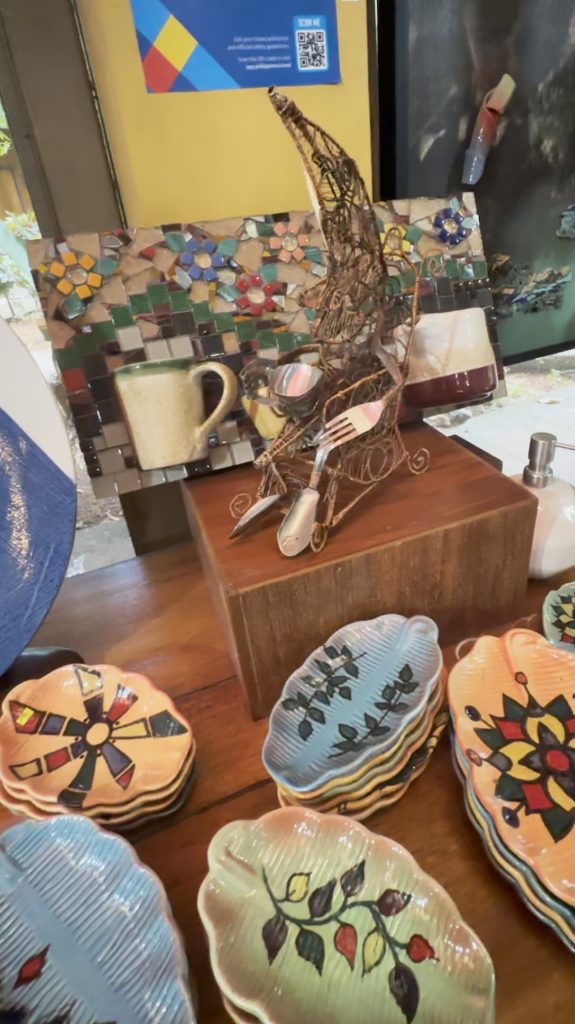











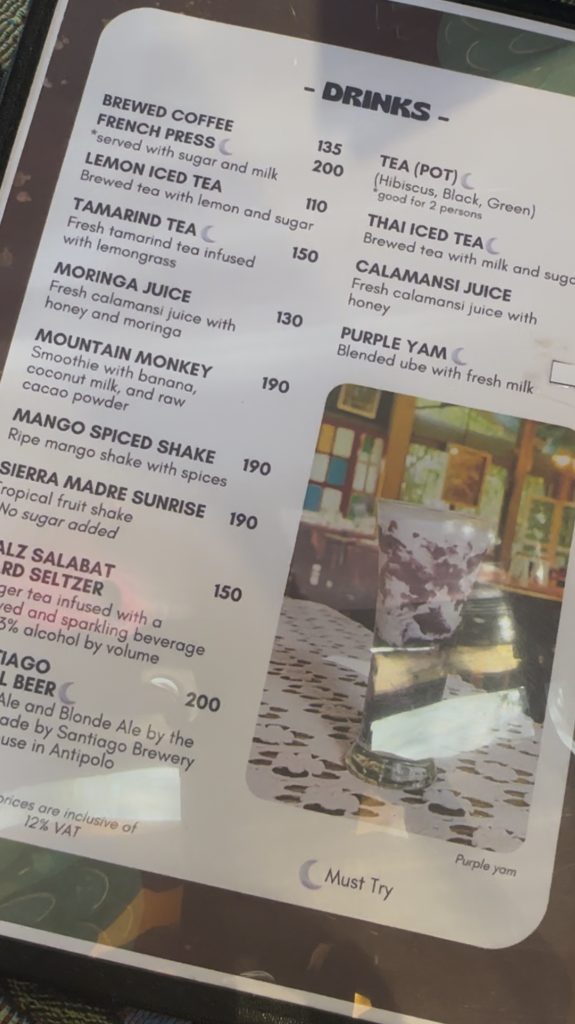



So…
- Art-wise, this place is worth checking out. They may not have as big a collection as, say, Pintô Art Museum, but… what’s there is okay enough.
- Those workshops may also be of interest to some, particularly for those interested in pottery. Plus you can buy pottery goods here, so yeah, a quick check may not be bad at all.
- Food-wise, however, we found this place wanting. The flavors we expected weren’t there… at least for most of those served to us. Considering the asking prices (and those reviews), the expectations were high. Too high, they weren’t met.
But off we go in search of more lafang venues.
Crescent Moon Cafe and Studio Pottery is located along Sapang Buho Rd., Brgy. Dalig, Antipolo. For more information, contact +63282345724, or email crescentmooncafeantipolo@gmail.com.
Destinations
Tasting Thai at Pad Thai Express
There’s consistency in the taste of #Thai cuisine, so you can quickly tell the good from the bad. We #LGBT checked Pad Thai Express to see how the resto chain fares.

One of the reasons why Thai food is good is its consistency – i.e. you may be in Bangkok, eating off those house-turned-restos to serve lunch-going employees in residential area-based offices; or in an eatery off the main tourist roads of Pattaya; or ordering from ambulant food vendors somewhere in Phuket… but the food tastes similar somehow. Yep, there would be slight differences (perhaps due to availability of goods, contexts of the actual locations, and so on), but a Pad Thai is a Pad Thai is a Pad Thai.
@outragemag #LGBT checking Pad Thai Express’s treatment of #Thai cuisine as #fastfood ♬ original sound – Outrage Magazine
This trait, this consistency, is what’s tricky when Thai recipes are prepared outside of Thailand. Because it makes it extremely easy to detect what claims to be Thai food, but doesn’t taste like Thai food at all.
Anyway… we checked one of the branches of Pad Thai Express, this chain of Thai restos all over Mero Manila. How was it for us?
Una, there are many branches of this business already, so you’re bound to find one that’s accessible to you. The one we visited is located inside Pilar Village in Las Piñas City, which has its own private security, meaning you may be mandated to leave an ID just to visit.
Ikalawa, the actual place isn’t grand… but it more than suffices since: it’s clean naman, has enough seats, and the air-conditioning was working during our visit. May parking pa nga eh.
Ikatlo, attentive ang staff – e.g. an admin officer was there when we visited, and she shared info pa on the owners, their branches, and so on. With small restos, kindness of staff matters as this always leaves a good impression.


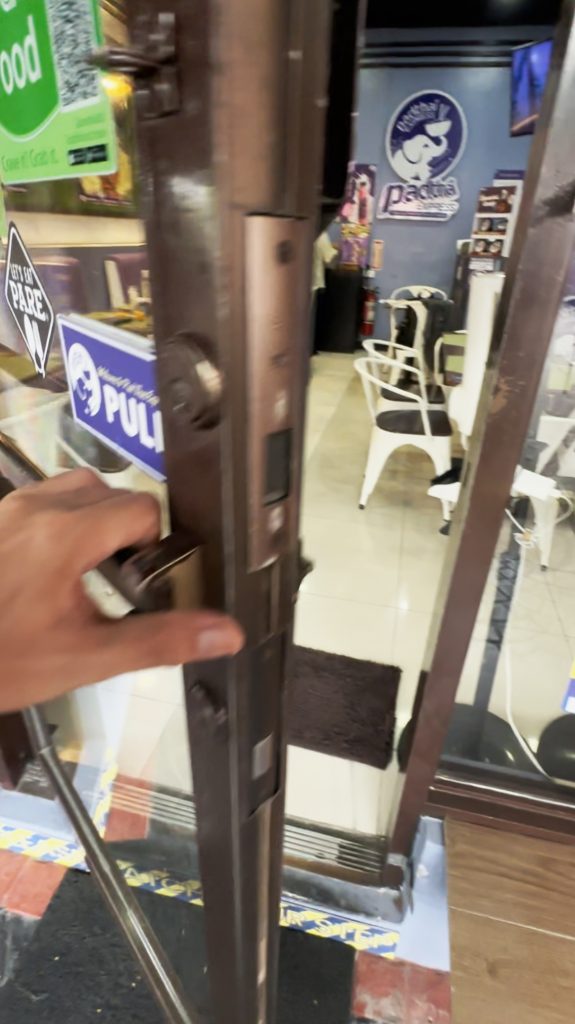














Ika-apat, how was the food?
- The ₱220 Thai Green Papaya Salad didn’t taste like som tam at all, as if some key ingredients were left out in the making of the sauce.
- The ₱370 supposedly highly-recommended Shrimp Tom Yum was okay naman… albeit the soup was on the watery side. At least malaman naman siya, with the shrimps not rubbery, so you know care was given in preparing this.
- The ₱225 Satay Chicken was… somewhat overcooked, so it was chewy, so that it tasted like BBQ bought from some street vendor (sorry…).
- The ₱345 Mixed Pad Thai was okay, though not something you’d write home about. Similar to the som tam, it tasted like a key ingredient was left out, so – while it’s supposed to be sweet, sour, salty, and savory with a hint of spice and nuts – this one wasn’t all that.
Yung gist, the name of the business ought to tell you the approach to Thai food here – i.e. “express”. This isn’t necessarily bad. But at least it’s a reminder to lower your expectations when here.
But off we go to search for more lafang venues.
Pad Thai Express – Pilar Village, Las Piñas Branch is located at Unit 4B of PDC Commercial, Pilar Rd., Las Piñas City, 1740 Metro Manila.
Destinations
Checking out Street Halo-Halo Milky Ice
#LGBT checking a #halohalo ‘specialist’ in #Manila to compare it with #Chowking, #Razons, and those from #streetvendors.

Tag-init, for many Filipinos, means finding the perfect halo-halo. You can just grab one from those street vendors; almost always, they’re the best. But for those without access to those off-the-street halo-halo vendors, the next best versions would be those from supposed halo-halo specialists… such as Street Halo-Halo Milky Ice, which – like Icebergs and Razon’s – eyes to be known for giving this Pinoy dessert a twist.
@outragemag #LGBT checking a #halohalo ‘specialist’ in #Manila to compare it with #Chowking, #Razons, and those from #streetvendors ♬ original sound – Outrage Magazine
Kumusta naman ang experience sa Street Halo-Halo Milky Ice?










Una, this biz actually has sit-down venues – e.g. the one we checked in Santa Ana in the City of Manila. But exactly because they have to pay for a dining venue, they don’t just offer halo-halo, but also so-so Mexican food. At least the space isn’t bad naman, and allows you to enjoy your halo-halo away from the humidity outside.
Ikalawa, slight maingay ang staff – e.g. when taking orders from foodpanda, or when chatting with each other. Promise, disturbing siya.
Ikatlo, kumusta ang halo-halo and the Mexican snack? More particularly, we tried the ₱150 ube halo-halo and the ₱200 taco?
- With the halo-halo, the winning element is supposed to be the shaved ice since timplado na, so may additional lasa. However… the shaved ice used here may not be lumpy as the one in Chowking, but it not as smooth as Razon’s either.
- If eating at Razon’s, you know there’s not a lot of sahog. But here, even if you do get more, nothing was memorable.
- Lasa-wise, the halo-halo was quite bland… even with all the sahog and all.
- The three pieces of tacos were so-so, tasting more like some inuman venue’s beef nachos than anything else. Overloaded with fake-tasting cheese, this appears like someone’s false idea of what Mexican food really is.
If, in the past, we craved for halo-halo during summer when the heat becomes intolerable, nowadays, that halo-halo craving is now what’s normal. Climate change is real, for real. So Street Halo-Halo Milky Ice has a captured market na. But if you can find others pa rin… like those selling halo-halo in street corners, try them as well. You’re bound to be pleased more for less the price.
So off we go for more lafang venue search…
Street Halo-Halo Milky Ice is located at 2241 Syquia St., Santa Ana, City of Manila, Metro Manila.
-

 Product Showcase3 weeks ago
Product Showcase3 weeks agoSip the magic of Christmas with Seattle’s Best S’mores Ghirardelli Collection
-

 NewsMakers3 weeks ago
NewsMakers3 weeks agoAt-home brain stimulation prevents depression relapse in 3 out of 4 patients, study finds
-

 Destinations5 days ago
Destinations5 days agoTasting Thai at Pad Thai Express
-

 Product Showcase6 days ago
Product Showcase6 days agoChristmas reunions made more joyful with Magnolia Chicken Timplados, #SarapMadeEasy
-
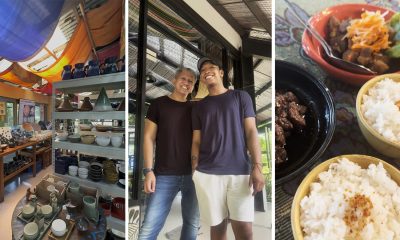
 Destinations2 days ago
Destinations2 days agoAntipolo’s Crescent Moon, where art meets food

